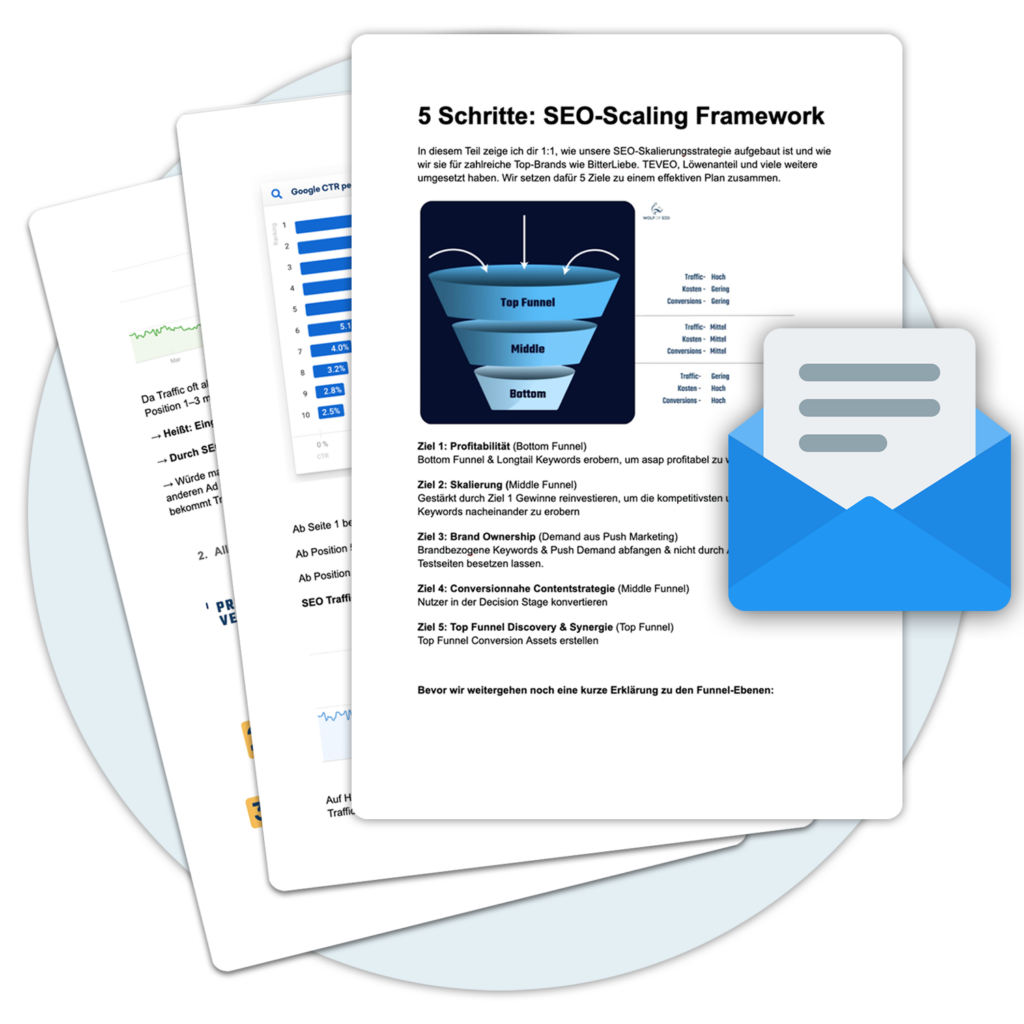What is a subdomain?
A Subdomain is a subset of a main domain and is formed by an additional prefix before the actual domain name. It can be regarded as an independent website, but exists within the main domain context.
The main purpose of a Subdomain consists of organizing and categorizing different areas, departments or subpages of a website. It can also be used to identify and differentiate specific content or services.
An example of a Subdomain would be "blog.domain.de" if "domain.de" is the main domain. Here, "blog" is the prefix that defines the Subdomain defined, and "domain.de" is the main domain on which the Subdomain exists.
Definition and function of a subdomain
A Subdomain is a part of a main domain that functions as an independent website or sub-area of the main domain. It is placed before the domain name and separated by a dot, e.g. subdomain.maindomain.com. Subdomains make it possible to organize different content or services on the same domain while still being independent.
The function of a Subdomain consists of further specifying the area of the website or the purpose of the content. It can be considered as a separate website that is accessible from the main domain. A Subdomain can contain various elements, such as
- Content in another language
- A blog or forum for discussing specific topics
- Your own online store
- A separate landing page for a specific marketing campaign
The use of a Subdomain visitors and search engines can better organize and find the content. It is important to provide a clear structure and navigation between the main domain and the subdomains to ensure an optimal user experience.
Examples and use of subdomains
A Subdomain is a subdomain that precedes the main domain and can function as an independent website or subpage. It is often used to separate and organize different areas or functions of a website. Here are some examples and possible uses of subdomains:
| Example | Intended use |
|---|---|
| store.domain.de | A separate online store hosted under the main domain. |
| blog.domain.de | An independent blog that is operated under the main domain. |
| forum.domain.com | A discussion forum that can be used as a separate Subdomain exists on the main website. |
| app.domain.com | A web application or mobile app that runs under a Subdomain is provided. |
With subdomains, it is possible to clearly separate different content and functions from one another and target them specifically. Thanks to the Subdomain-structure, visitors can quickly find the desired area of the website and companies can better organize and manage their content.
Advantages of using subdomains
A Subdomain offers several advantages for companies and website operators. Here are some of the most important:
- Better organization: By using subdomains, the content of a website can be better organized. Each Subdomain can be dedicated to a specific topic or category, improving navigation and structure.
- SEO flexibility: Subdomains offer the opportunity to implement different SEO strategies for different areas of the website. By using separate subdomains, specific keywords, meta tags and content strategies can be applied to improve visibility in search engines.
- Branding: Subdomains can be used to emphasize certain brands or products. A Subdomain with the name of a product or brand can help to strengthen visibility and branding.
- Geographical focus: With a Subdomain a website can be geographically targeted. Companies with different locations can each have a separate Subdomain to offer locally relevant content.
- Flexibility in the choice of hosting: By using subdomains, it is possible to use different hosting providers for different areas of the website. This enables specific customization of the technical requirements for each Subdomain.
SEO advantages of subdomains
One of the main benefits of using subdomains in the context of SEO is that they allow different topics or niches to be covered on a single website. This allows the website owner to target a wider audience and gain more organic traffic. Traffic generate.
In addition, the use of subdomains allows better organization of content and a clearer separation between different areas of the website. This makes it easier for both users and search engines to find relevant content.
Another SEO benefit of subdomains is that they make it possible to create content targeted at specific keywords or search terms. This can increase the visibility of the website in search results and lead to a higher positioning.
Subdomains can also help to improve link building as they can be seen as standalone websites. This means that they have their own Backlinks which in turn can lead to an improved SEORanking can lead.
However, it is important to note that subdomains can also have potential disadvantages. It is advisable to evaluate the individual advantages and disadvantages in the context of your own website before deciding to use subdomains.
Organizational advantages of subdomains
The use of subdomains offers various organizational advantages for companies. Here are some of the main benefits:
- Separation of content: By using subdomains, companies can better organize their content and separate it thematically. Each Subdomain can be used for different aspects or areas of a company or website.
- Simple administration: The clear separation of the contents of a Subdomain makes it easier to manage and update content. Changes can be made specifically on a Subdomain without affecting other areas of the website.
- Flexibility in scaling: Subdomains allow companies to flexibly expand their website and add new content areas. For example, new product categories or regional websites can be easily created as separate subdomains.
- Branding opportunities: By using subdomains, companies can present different brands or products and create an individual brand identity for each one. Subdomain create
- Different access authorizations: Subdomains can also be used to grant specific access authorizations and autonomy to certain user groups or teams. This allows different departments within a company to manage their own subdomains independently.
- Better analysis and tracking: By using subdomains, companies can better structure their analysis data and obtain specific information for each domain. Subdomain which leads to a more detailed analysis.
Disadvantages of using subdomains
Although subdomains offer many advantages, there are also some disadvantages that should be considered when using them:
- Longer loading times: As each Subdomain is a separate website, users must pay for each Subdomain establish a new connection. This can lead to longer loading times, especially if the server performance is not optimal.
- Administrative Effort: As subdomains are independent websites, they also require separate administration. This means that updates, security patches and content updates for each Subdomain must be carried out separately. This can be time-consuming and complex.
- Loss of SEO rating: Subdomains do not automatically share the SEO rating of the main domain. Each Subdomain must be individually optimized to achieve good rankings in search engine results. This requires additional effort and resources.
- Duplicated content: If content is duplicated between the main domain and subdomains, this can lead to duplicate content issues. Search engines may have difficulty identifying which version of the content should be prioritized, which can lead to poorer SEO performance.
Potential SEO disadvantages
Although subdomains offer many advantages, there are also potential disadvantages to consider, especially in terms of SEO. Here are some of the potential SEO disadvantages of subdomains:
- Shared authority: A Subdomain is often considered a standalone website and can therefore build its own authority. However, this means that authority is not automatically transferred to a main domain, which can lead to shared authority and a potential reduction in overall ranking.
- Duplizierte Inhalte: If you want to share the same content on both the main domain and a Subdomain this can lead to duplicate content. Search engines such as Google can view duplicate content as spam and reduce rankings accordingly.
- Complexity: The use of subdomains can make the administration and maintenance of a website more complex. Each Subdomain must be managed separately, which can take more time and effort.
Technical challenges when using subdomains
When using subdomains, various technical challenges can arise that need to be taken into account. Here are some of the most common problems and their solutions:
1. DNS configuration: A correct DNS configuration is crucial in order to use subdomains correctly. It is important to ensure that the DNS entries are set correctly so that the Subdomain works properly.
2. separate administration: Since subdomains are treated as independent websites, they require separate administration. This means that Backend-access rights, website updates and security measures for each Subdomain must be defined separately.
3. Content-duplication: The use of subdomains can lead to Content-duplication, as two separate URLs can contain the same content. This can have a negative impact on the Ranking in the search engines. To avoid this, canonical tags should be used to indicate the preferred content.
4. tracking and analysis: The use of subdomains can complicate the tracking and analysis functions, as the data traffic is distributed across several separate URLs. It is important that the tracking codes are inserted correctly on all subdomains and that the data analysis is adjusted accordingly.
5. safety: A Subdomain can represent a separate attack surface for potential security threats. It is important that each Subdomain is appropriately secured and regular safety checks are carried out.
Creation of a subdomain
A Subdomain can be an effective way to organize and manage certain areas of a website. Creating a Subdomain makes it possible to create separate content, functions or areas within a main domain. Each Subdomain a clear URLwhich comes before the actual domain name.
To create a Subdomain a few steps are necessary. Here is a guide to setting up a Subdomain with different hosts:
| Host | Instructions |
|---|---|
| Host A | 1. log in to your hosting account. 2. navigate to the DNS settings. 3. select the option "Add subdomains". 4. enter the name of the desired Subdomain and confirm the entry. |
| Host B | 1. log in to your hosting account. 2. go to the domain settings. 3. select the option "Create subdomain". 4. enter the name of the Subdomain and the desired settings. 5. save the changes. |
It is important to note that the exact steps for creating a Subdomain may vary depending on the host. It is advisable to consult the documentation of the respective host or contact support to find out the exact steps.
Instructions for setting up a subdomain with different hosts
A Subdomain can be set up and used on various hosts. Here are step-by-step instructions for setting up a Subdomain on the most popular hosting platforms:
1. setting up a subdomain on GoDaddy
- Log in to your GoDaddy account and navigate to your Domain Manager.
- Select the desired domain and click on "Edit DNS".
- Scroll to the "Area records" section and click on "Add".
- Select "CNAME" as the record type and enter the desired Subdomain as host.
- Enter the target value that should be set to the host of your Subdomain should refer.
- Click on "Done" and save the changes.
2. setup of a subdomain on Bluehost
- Log in to your Bluehost account and go to the "Subdomains" page.
- Click on "One Subdomain add".
- Enter the desired name for your Subdomain and select the desired domain.
- Click on "Create" and wait until the Subdomain is set up.
3. setting up a subdomain on HostGator
- Log in to your HostGator account and go to the "Subdomains" section.
- Click on "One Subdomain add".
- Enter the desired name for your Subdomain and select the desired domain.
- Click on "Create" and wait until the Subdomain is set up.
With these instructions, you can quickly and easily set up and use subdomains on different hosts. Make sure to adjust the settings according to your specific hosting platform.
Subdomain versus subdirectory
An important decision when structuring a website is whether to use subdomains or subdirectories. Both options have their advantages and disadvantages and there are various factors that should be considered to make the best choice. The following explains the distinguishing features and uses of subdomains and subdirectories as well as their SEO aspects.
Distinguishing features and intended use
A Subdomain und ein Subdirectory sind zwei verschiedene Möglichkeiten, um eine Website zu strukturieren und Inhalte zu organisieren. Hier sind einige Unterscheidungsmerkmale und Verwendungszwecke, um die beiden Konzepte besser zu verstehen:
- Technical structure: A Subdomain is an independent partial address that precedes the main domain name, e.g. subdomain.example.com. A subdirectory, on the other hand, is a directory within the main domain that follows the domain name, e.g. example.com/subdirectory.
- Separation of content: Subdomains make it possible to separate different types of content from one another. For example, you can create a Subdomain for your blog, another Subdomain for your online store and another Subdomain for your forum. This allows content to be clearly separated and easier to manage.
- Geographical focus: Subdomains can also be used for the geographical targeting of content. If you have a website that should be available in different countries, you can create subdomains for the respective countries, e.g. en.example.com for Germany and uk.example.com for the United Kingdom.
- Linguistic differentiation: Similar to the geographical orientation, subdomains can also be used to differentiate content by language. You can use a Subdomain for the German version of your website, e.g. de.example.com, and another one Subdomain for the English version, e.g. en.example.com.
- Marketing strategies: Subdomains can also be used for various marketing strategies. For example, you could use a Subdomain for a special campaign in order to create the Traffic to this specific landing page.
Case studies and best practices for subdomains
Some case studies and best practices for using subdomains can help you get the most out of this technology. Here are some examples of how companies have successfully used subdomains:
- SupportSubdomain: A company could use a Subdomain such as support.domain.de to offer its customers a dedicated support area. This allows customers to get information and resources without getting lost on the company's main website.
- Regional subdomains: A large retail chain could set up subdomains for specific regions or locations, e.g. berlin.domain.de or hamburg.domain.de. In this way, they can provide their customers with location-specific offers and information while maintaining a consistent brand image.
- Product subdomains: A company that offers a wide range of products could have a Subdomain for each product to provide specific information and details. For example, you could create a Subdomain like produktA.domain.de for your product A.
These examples show how companies can use subdomains to fulfill different requirements and purposes. It is important to consider the goals and needs of your business to determine the best possible use of subdomains.
« Back to Glossary Index






